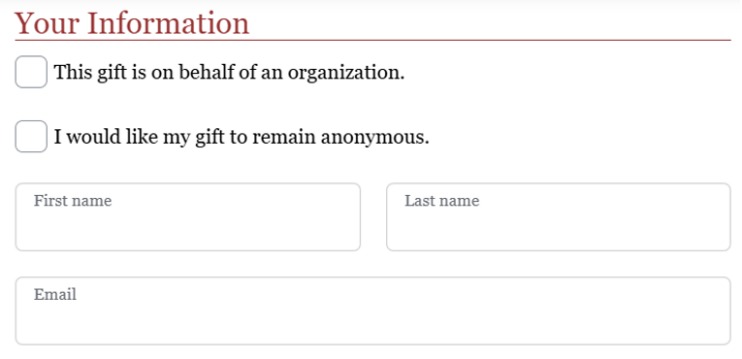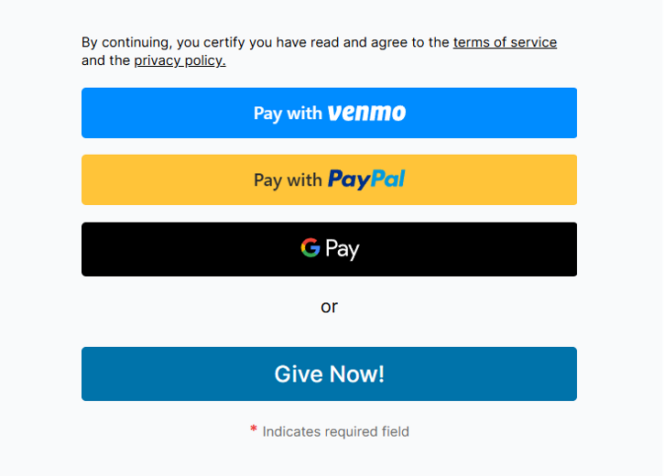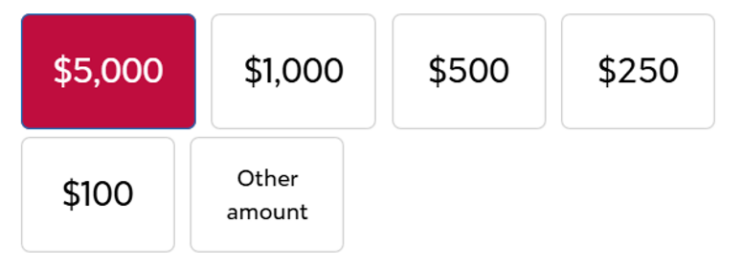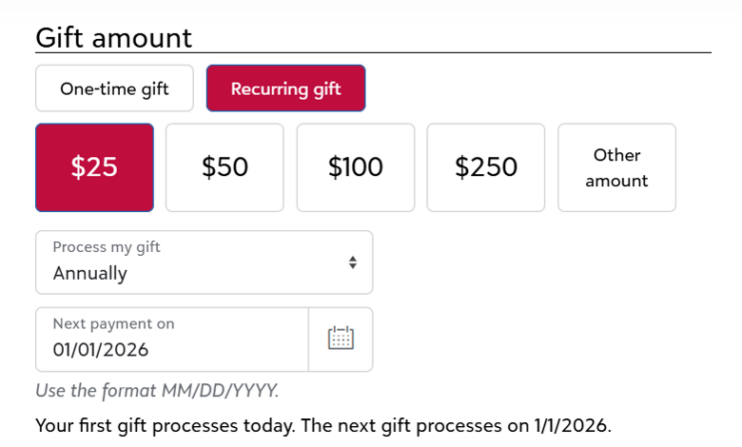Tips and Tricks to Fine-Tune Your Donation Form

Creating an effective donation form is crucial for maximizing contributions and ensuring a seamless donor experience. A well-designed form removes friction, builds trust, and encourages donors to complete their gifts. As a result, optimizing your donation form can significantly impact your fundraising success.
In this blog, we’ll cover everything you need to know about the key foundations of an effective donation form, along with practical tips and tricks to boost conversions and satisfaction alike.
Understanding the Online Giving Landscape
The world of charitable giving has undergone a massive transformation in recent years, with online donations becoming an essential fundraising channel for nonprofits and educational institutions both. As technology advances and digital platforms evolve, understanding the online giving landscape is crucial for organizations looking to maximize their fundraising potential.
Specifically, online giving refers to the process of donating money through digital platforms—including nonprofit websites, crowdfunding campaigns, mobile apps, social media fundraisers, and more. The ease and convenience of online giving has made it a preferred method for many donors, allowing them to contribute anytime, anywhere, using credit cards, digital wallets, or direct bank transfers.
Online giving is steadily growing, particularly with emerging nonprofits and schools, representing 13.4% of all giving to small organizations. Meanwhile, corporate giving has also experienced significant growth, with businesses recognizing the importance of social responsibility in their strategies and more and more organizations including matching gift designations on their donation forms.
Key Online Giving Elements: Building Effective Forms
A well-designed online giving page can significantly impact donor engagement and conversion rates. To maximize contributions and ensure a seamless experience, consider these essential elements when building (or tweaking!) an effective form.
Accessibility
A truly effective donation form is one that every donor can use—including those with differing abilities or limitations. Thus, accessibility ensures that all potential supporters can navigate your form and complete their donations with relative ease.
What makes a donation form accessible?
- Perceivable: Is your donation form easy to locate on your website?
- Operable: Is your donation form usable from a donor’s perspective?
- Understandable: Does your donation form employ simple language, clear images, captions, and/or ALT text when necessary?
- Robust and easily interpreted: Does your donation form lead the donor through the complete giving process?
Pro tip: When it comes to accessibility, keep in mind that this should include any additional fundraising integrations that you add onto your donation form, too—like a matching gift search tool!
Consistent Branding
For the best results, your donation page should align seamlessly with your organization’s overall branding. Thus, you’ll want to incorporate your color scheme, fonts, and imagery into the form’s design. In other words, the layout should mirror your main website to provide a cohesive giving and engagement experience.After all, a well-branded form reassures donors that they’re giving to the right place and fosters a sense of professionalism and credibility.
Beyond aesthetics, you’ll want to maintain consistency in your messaging, too. If your nonprofit is known for its warm, inspiring tone, let that voice carry over into the form’s text and call-to-action buttons. Again, this helps reinforce donor confidence and encourages them to complete their gifts.
Storytelling
A donation form isn’t just a transaction page—it’s an opportunity to remind donors why their contributions matter. Luckily, storytelling can transform a simple act of giving into a meaningful experience by connecting donors to the people or causes they’re supporting.
To get started, include a brief but powerful story on the form, highlighting how donations make a tangible impact on your cause. This could be a short testimonial from a beneficiary, a compelling statistic, or an image that evokes emotion. For example, a hunger relief organization might display a photo of a child receiving a meal with a caption like, “Your gift of $50 provides a month of nutritious food for a child in need.”

Fine-Tuned Form Fields
The more complicated a donation form is, the more likely a donor is to abandon it. Luckily, fine-tuning your form fields ensures a smooth, frustration-free experience that encourages completion.
Though it can vary by form and approach, start by requiring only essential information. While it may be tempting to gather extra details for future outreach, too many fields can deter donors.
Typically, name, email, and payment details should be the minimum. If you need additional information (such as employer name), consider making those fields optional to reduce barriers to giving and avoid additional friction in the process.

Diversification of Giving Methods
Different donors have different preferences when it comes to payment methods. Some may want to use a debit or credit card, while others prefer PayPal, Apple Pay, or ACH bank transfer.

Ultimately, offering multiple options increases accessibility and prevents potential donors from abandoning their gifts due to payment limitations. The more ways people can give, the fewer roadblocks they will encounter in the donation process.
Suggested Donation Amounts
Many donors struggle to decide how much to give. Suggested donation amounts can help guide their decisions and often lead to higher contributions overall. Therefore, instead of leaving the donation amount open-ended, present predefined options—such as $100, $250, $500, or $1,000.

For the best results, however, you’ll want to customize these presets based on your audience and typical donation behavior. If your analytics reveal that most donors give around $50, make that the default selection. You can motivate deeper generosity when you pair each amount with a brief impact statement—such as “$50 provides school supplies for one student for a semester.”
Still, be sure to include a custom donation field for those who prefer to give a different amount (above, below, or in between suggested gifts). You want all potential donors to be able to contribute at a level comfortable for them.
Recurring Giving
Recurring giving is one of the most effective ways to build sustainable funding. That’s why a well-optimized donation form makes it easy for donors to commit to a monthly, quarterly, or annual gift.
Often, it’s as simple as prominently featuring a checkbox or button that allows a donor to upgrade their contribution to a recurring one.

Meanwhile, to encourage this behavior, use language that reinforces the impact of ongoing support, such as “Make this a monthly gift to provide continuous help to those in need.”
Matching Gifts
Many donors are unaware that their employers may match their charitable contributions, but the presence of a potential match can have a real impact on supporter behavior. As a result, integrating a matching gift tool into your donation form can significantly increase donations without requiring donors to give more themselves.
Include a simple employer search function (such as Double the Donation’s embeddable database tool) that allows donors to check if their company participates in matching programs. Then, if applicable, the platform provides information on how they can submit a matching gift request.

Highlighting matching gifts not only increases the impact of individual donations but also encourages higher giving levels since donors know their contributions could be doubled or even tripled.
Regularly Test Your Form
An excellent donation form isn’t static. It should be regularly tested and refined to improve conversion rates over time. To do so, try conducting A/B testing on different elements, such as button colors, form layouts, suggested donation amounts, or call-to-action text, to see what resonates most with donors.
From there, analyze key metrics, such as abandonment rates and average donation size, to identify areas for improvement.
- Are donors dropping off at a particular step?
- Is mobile performance lagging behind that of desktop users?
These insights can help guide necessary adjustments so you can be sure your form remains user-friendly, efficient, and effective in maximizing contributions.
Looking Ahead: The Future of Digital Giving
As technology evolves, so too does the landscape for digital giving. Nonprofits that embrace innovation and adapt to shifting donor expectations will be best positioned for long-term success.
Here’s what we expect on the horizon:
- A continued increase in mobile giving
- Growth of AI in fundraising
- Adoption of social media and influencer partnerships
- Expanded workplace giving initiatives
- Opportunities for hyper-personal giving
By continually optimizing your donation forms and staying ahead of technological trends, your team can ensure that its online giving experience remains effective, engaging, and accessible to all.


